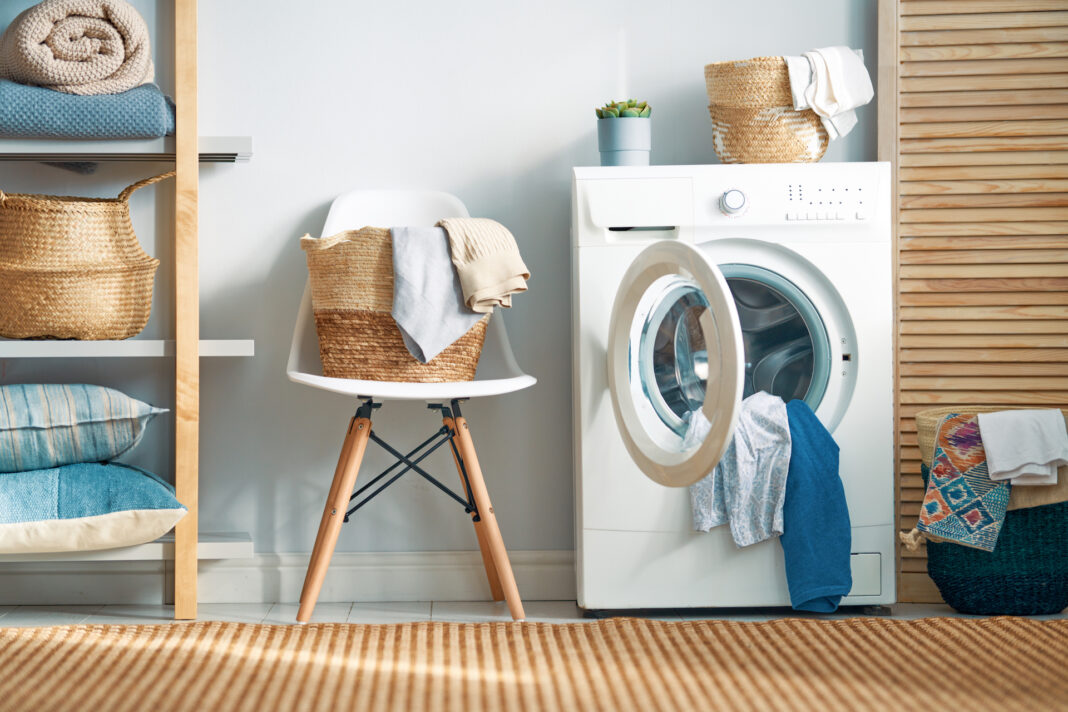
Doing laundry is a regular part of life, and with in-unit laundry, that part of life can be a lot more convenient. But, there are also many reasons to not get a rental with in-unit laundry. Explore what in-unit laundry really means, the pros and cons of having an in-unit washer and dryer, other common laundry options available in rentals, and more.
What Is In-Unit Laundry?
In-unit laundry refers to having a washer and dryer in the apartment, house, or other rental unit you’re living in. This means that the landlord or property owner has already bought and installed the appliances for you to use. Your landlord or property manager must also maintain, fix, and replace the appliances should they break or malfunction. In fact, reporting when these appliances aren’t working properly may be part of your renter’s responsibilities as outlined in your lease.
If a rental does not have in-unit laundry, it might have one of the following options:
A community or shared laundry room
With this option, you would take your laundry to the designated laundry room, which is like a mini laundromat with multiple washers and dryers, and pay per wash and per dry. Depending on your landlord, you may pay with coins or using a reloadable card. You can typically find laundry rooms in single apartment buildings, apartment complexes where there may be one room or one per every few units, or in a multi-family house.
Washer-dryer hookups
This option refers to the unit having the water, ventilation, and electrical setups ready for you to install your own washer and dryer. If you don’t already have a washer and dryer, you would have to purchase your own and have them installed or install them yourself. You could also just cover the hookups, such as by placing storage in front of them, to block the sight of them if you don’t want to bring your own appliances.
Pros and Cons of Having In-Unit Laundry
Here are some of the pros of having laundry in your rental unit:
- Increased convenience for doing laundry whenever you want
- The convenience of not having to bring your own washer and dryer
- It is typically housed in its own closet, laundry room, or spot in the kitchen or bathroom
- Less money is spent on laundry expenses like self-service or full-service laundry
- No need to maintain, fix, replace, or otherwise pay for maintaining these appliances
There are a few drawbacks of in-unit laundry, including:
- It often makes rent a bit more expensive
- It increases utility charges, including water and electricity
- It takes up space in your apartment, which could mean less storage space
- There is a potential for damage, such as flooding or fire hazards
Tips for Keeping Your In-Unit Laundry Machines Clean
As a renter, you’re responsible for taking the best care of all of the appliances and property while you live in your rental unit. This may include cleaning your in-unit laundry machines regularly to make sure they run efficiently and effectively. Keeping them clean can also prevent long-term damage and ensure that your laundry gets clean.
Here are some tips you can follow to maintain the cleanliness of your in-unit laundry machines:
- Remove the lint from your dryer’s lint trap before every use
Before you run the dryer, always check the trap for lint and throw it away. Built-up lint can prevent proper ventilation and even ignite due to the heat, creating a fire hazard. - Have your landlord or maintenance crew check the vents every two years
If you’ve lived in a unit for two years or more, ask your landlord or put in a maintenance request to have them check and clean the exhaust vent of your dryer and clear the vent outside. This can ensure the dryer isn’t using too much energy and can efficiently dry your laundry. - Deep clean the lint screen
Every three months, or once every season, give your dryer’s lint trap a good scrub. Use a bit of detergent and rinse it, or you can even put it in the dishwasher. This will clear any residue from dryer sheets, detergents, or softeners you use and remove any small remnants of lint. - Wipe down the barrel of your dryer
Every few months, use a rag and some rubbing alcohol to wipe the inside of your dryer to get rid of any residue or lint. Just make sure to let your dryer air out and dry completely to prevent any accidental mold growth. - Clean your washer regularly
Use a three-step process involving bleach water, white vinegar water, and then vinegar-water spray and cloth. Important note: do not mix the bleach and vinegar together as this could create lethal gas. You can also find other processes that involve white vinegar, baking soda, and hydrogen peroxide. - Avoid overloading both machines
Using smaller loads may take a bit longer, but it can help make sure that your washer and dryer work as effectively as possible for many loads to come. Larger loads of laundry actually take more energy to clean and dry. - Open the washer door
After each wash, leave the door open so the unit can dry off completely. This can prevent mildew and musty smells. - Leave room between both machines
If you have both a washer and a dryer, make sure to regularly check how far apart they are. They should be at least 4 inches apart to avoid them knocking into one another during their cycles.
While some people think in-unit laundry is non-negotiable, others are fine without it and even prefer to use community laundry rooms or go to the laundromat. Think about your lifestyle and what you need out of an apartment to determine if in-unit laundry is on your rental checklist.



